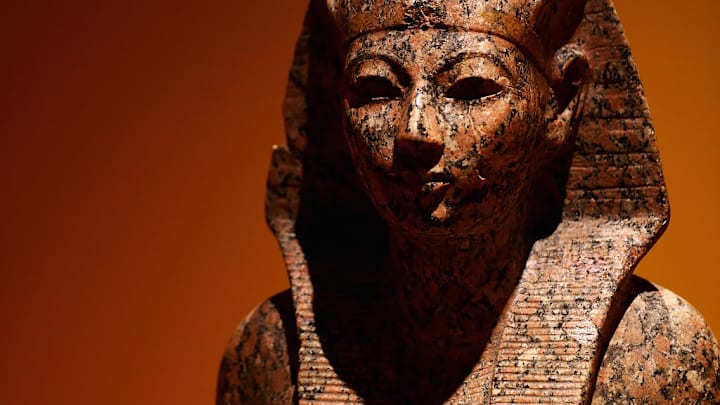Everybody’s heard of King Tut, mainly because looters overlooked his tomb for three millennia. Yet many more leaders of ancient Egypt are worthy of notice—not the least of whom is Hatshepsut, Egypt's most powerful female pharaoh.
In the 15th century BCE, female rulers were exceedingly rare, and even those few who appeared to be dominant often weren’t. There were queen regents standing in for young male rulers, and some rumored to be pharaohs, such as Sobeknefru. But their reigns were short, and most historians don’t believe that they were particularly influential.
Hatshepsut, on the other hand, seized the reins of power and never let go. When her husband (and half-brother), King Thutmose II, died around 1478 BCE, his only male heir was Thutmose III, whose mother was Thutmose II's concubine. Since the child was too young to rule, Queen Hatshepsut was named as his regent. However, as the daughter of King Thutmose I, Hatshepsut had her own legitimate claim to rule Egypt. At some point during the next seven years, she controversially went above and beyond the regent role by proclaiming herself pharaoh instead of handing her power over to Thutmose III when he came of age.
In an effort to legitimize her position, Hatshepsut masculinized her image. She was depicted with a false beard, the symbol of a living god. She ordered sculptors to give some of her likenesses broader shoulders and chests. She even called herself Hatshepsu, removing the feminine t from the end of her name.
Egypt's Eighteenth Dynasty under Hatshepsut was relatively peaceful and prosperous; she focused on building infrastructure and diplomatic ventures. Her government increased trade with civilizations such as Phoenicia. Nine years into her rule, an expedition she had organized to the land of Punt returned with timber, gold, frankincense, myrrh, and even exotic animals.
The expedition was immortalized on the walls of Hatshepsut’s most breathtaking project—her gorgeous Djeser-Djeseru temple (which still exists), built to glorify the great god Amun. Inside, the pharaoh’s name and likeness were proudly displayed. At least they were until someone erased them.
Hatshepsut remained in power up to the day she died, meaning that her stepson, Thutmose III, wouldn’t become Egypt’s sole ruler until 1458 BCE. It has been suggested that after Hatshepsut's death, Thutmose III set about spitefully chiseling out numerous references to her at the temple and elsewhere to obliterate her memory, but the destruction of Hatshepsut's various likenesses didn't occur until many years into Thutmose III's reign, and continued into that of his son, Amenhotep II. The goal was likely to remove Hatshepsut from memory because Thutmose III's claim to the throne was comparatively weak. By defacing her temple, Thutmose III was likely protecting his future authority.
Whatever his motive, Hatshepsut remains the best-known female pharaoh, and—as the American Egyptologist James Henry Breasted put it—“the first great woman in history."
A version of this story ran in 2015; it has been updated for 2022.
